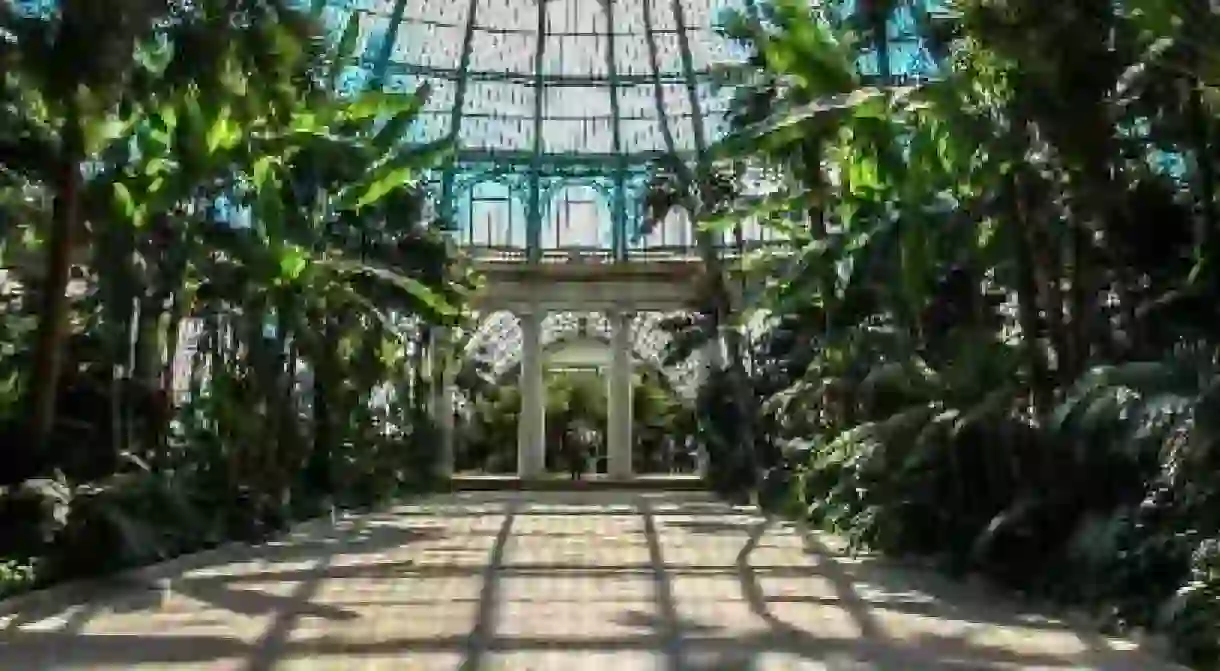The Royal Greenhouses Of Laeken And The Father Of Art Nouveau

The Royal Greenhouses of Laeken, designed by Alphonse Balat in 1873 for Leopold II, King of Belgium, are exceptional examples of Art Nouveau style that offer a magnificent home for an exquisite variety of plants and special flowers in a spacious setting.

Alphonse Balat, born in the Belgian municipality of Gochenée in 1819, graduated from the Academy of Antwerp in 1838 with a degree in architecture. He spent time in Paris until 1846, when he moved to Brussels and was introduced to the royal family. From then on, Balat became one of the most well-known architects to have collaborated with the Belgian monarchy, constructing several temporary festive decorations as well as permanent architectural designs.
Balat dedicated much of his career to a stylistically interesting combination of renaissance and neoclassical elements. For most of his interior designs, he used elements from the Louis XV and Louis XVI styles. Balat was chosen by Leopold II as the principal architect for a number of designs for the exceptional reception rooms of the Royal Palace of Belgium, such as the ‘Throne Room’, ‘The Grand Staircase,’ and the ‘Grande Galerie.’ Among his most significant creations are the Salle de la Madeleine (Magdalenamarkt) and the Royal Greenhouses of Laeken.

The Royal Greenhouses of Laeken were built between 1874 and 1895 and are located in the north of Brussels. They consist of a vast complex of dome-shaped buildings connected by arched galleries. The total floor surface of this immense complex has been estimated to be 2.5 hectares (270,000 square feet), and 800,000 liters (over 200,000 US gallons) of fuel oil are needed each year to heat the buildings.
With the design of the Royal Greenhouses, Balat decided to introduce the innovation of glass and iron into his prestigious decoration motifs, intertwining them with the plants and flowers. Around this concept, he built an exemplary Glass City set in an undulating landscape. This was a first step towards the Art Nouveau architecture that Balat’s protégé Victor Horta would further develop.

Every spring during March and April, the greenhouse complex opens to the public during a three-week period when most flowers are in full bloom. It is an excellent opportunity to see both the wonderful architectural creations of the father of Belgian Art Nouveau and a distinguished plant collection. The complex offers an impressive variety of rare plants and flowers, a majority of which date back to Leopold II’s original collection.
The interior architecture enriches the exotic combination of trees and plants kept and designed to blossom in the so-called Ideal Glass Palace of the King, an astonishing sight for visitors walking through the monumental pavilions bridged with impressive glass arcades, featuring glorious iron details alongside climbing plants. Certain parts of the complex, such as the Pier and the Winter Garden, are fine examples of the interior and exterior architecture of Art Nouveau and therefore some of the most significant and architecturally interesting parts of the complex.

The Winter Garden was built between 1874 and 1876 and was the first greenhouse to be built. Its immense dimensions and spacious interior design allow a wide variety of palm trees to grow and expand extensively in symbiosis with the other plants. The Pier Greenhouse, one of the most popular, was built later, through 1886 and 1887, and was intended to receive visitors when the King was busy in the Winter Garden or the Dining Room Greenhouse. With an impressive staircase leading to the Winter Garden, the interior of the Pier makes for a beautiful walk through the paved ways, full of tropical Medinillas, before visitors come across the statues by Charles Van der Stappen, Dawn and Evening, at the ends of the Pier.


The Royal Greenhouses of Laeken are among the most interesting examples of Royal architectural masterpieces in Belgium. Consider the dates when they are open to the public when planning your visit, and give yourself the opportunity to admire the variety of rare flowers and tropical plants in a gorgeous setting.
Koninklijke Parklaan, 1020 Brussels, Belgium +32 2 551 20 20













